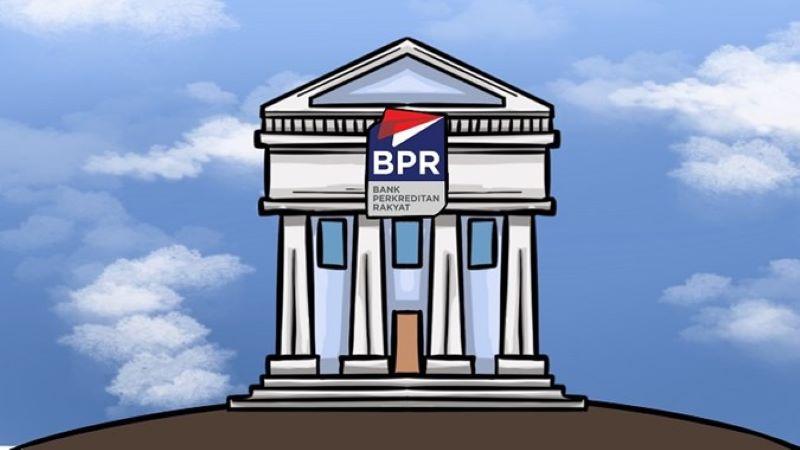Indonesia's rural banking sector is entering a transformative era as BPR merger consolidation gathers momentum. Most recently, four Bank Perkreditan Rakyat (BPR) institutions announced plans to merge—an operation endorsed and guided by the Financial Services Authority (OJK). With these moves, rural banks are on a path to becoming stronger, more efficient, and better equipped to support local economies.
Over the past few years, OJK has systematically encouraged consolidation to ensure BPRs meet capital minimums and operate competitively. These mergers are more than regulatory compliance—they represent a strategic effort to uplift Indonesia's financial infrastructure at the grassroots level.
Why BPR Merger Consolidation Matters
BPRs play a vital role in providing financing to micro, small, and medium enterprises (MSMEs) and rural communities. However, with increasing regulatory demands, such as the required minimum core capital of IDR 6 billion—and digital transformation pressure, many standalone BPRs have struggled to keep pace. Consolidation addresses several critical issues:
- Regulatory compliance: Merging entities can combine capital to meet OJK’s requirements and avoid license revocations.
- Operational efficiency: Fewer entities mean streamlined administration, improved risk management, and lowered costs
- Technology integration: Larger BPRs are better positioned to invest in digital infrastructure, from mobile banking to Qris payments, helping to serve modern consumers .
These outcomes are visible in merger case studies: post-consolidation, banks often record stronger financial performance and increased capacity for innovation.
The Current Round: Four BPRs Preparing to Merge
As reported by local media, four BPRs have begun merging steps—driven by shared ownership, capital pooling, and strategic operational alignment. While each merger is unique, common benefits include:
- Capital strengthening: Combining reserves helps the newly formed bank meet compliance and expand loan portfolios.
- Expanded branch network: Agencies transform into branches under a unified brand; banking services remain accessible.
- Cultural alignment: Management teams work to blend corporate cultures and maintain employee morale amid restructuring concerns.
These mergers, though still in early stages, reflect a carefully designed approach: expansion within compliance, investment-ready capabilities, and community continuity through unified leadership.
Broader Impact: Industry Landscape Shifts
OJK’s bold target is to reduce around 600 BPRs down to roughly 1,000 by 2027. Data from early 2024 shows 43 BPRs already consolidated into 14 units, with 25 more mergers in process, and dozens in regulatory pipeline.
This is reshaping the rural banking sector:
- Stronger banking network: Larger BPRs emerge with better capital, governance, and digital readiness.
- Enhanced customer access: BPR clients continue to see localized services through retained branches.
- Industry confidence: Investors and partners show increased interest post-consolidation due to enhanced bank stability.
However, some challenges remain, employee redundancies, cultural integration, and human resource distribution. OJK urges firms to manage these issues carefully to sustain trust.
Balancing Efficiency with Fair Workforce Transition
While efficiency gains are clear, attention must be paid to the human side of mergers. Combining boards and leadership can reduce executive roles. Employees may face transfers or job evaluations, requiring thoughtful handling.
Prominent BPR associations emphasize:
- Education and open channels: Clear communication and reskilling steps to reduce staff anxiety.
- Employee redeployment: Creating roles in merged structures and expanding digital services to utilize human resources.
- Cultural preservation: Conducting workshops and retreats to align employees around a unified vision .
These measures help ensure that consolidation strengthens banks without diminishing community trust or employee wellbeing.
Looking Ahead: Roadmap to 2027
The BPR merger consolidation wave shows no signs of slowing. OJK has outlined a roadmap for 2024–2027 focused on four strategic pillars:
- Strengthening structure and competitiveness via mergers and capital enhancements.
- Accelerating digital adoption, to provide 24/7 services and modern payment options .
- Deepening local market focus, helping BPRs serve MSMEs more effectively.
- Enhancing regulatory governance, including risk strategies and transparent operations .
Through these coordinated efforts, Indonesia’s rural banking system is set to emerge stronger, more inclusive, and more resilient.
What Stakeholders Should Monitor
- OJK regulatory updates: Monitor policy changes linked to Single Presence Policy and capital standards.
- Merger announcements: Communities should stay informed about branch changes, leadership structures, and service continuity.
- Digital transformation: Watch how merged BPRs integrate online banking, agent networks, and QR payments.
- Workforce changes: Evaluate staff realignment efforts to preserve morale and service quality.
- Investor signals: Rising financial interest indicates a positive shift—keep an eye on capital inflows.
A New Chapter for Rural Banking
The recent merger of four BPR institutions marks an important moment in rural banking consolidation. As Indonesia’s regulator-led framework gains traction, BPR merger consolidation is poised to fulfill its promise: creating stronger banks that better support MSMEs, embrace digital transformation, and enhance local financial inclusion.
By combining resources, improving governance, and prioritizing community service, these rural banks can evolve from fragmented local players to powerful pillars of regional economic growth. With careful handling of challenges like staff integration, this consolidation wave could shape a resilient and modern rural banking landscape for the decade ahead.
Read More






 Saturday, 29-11-25
Saturday, 29-11-25







